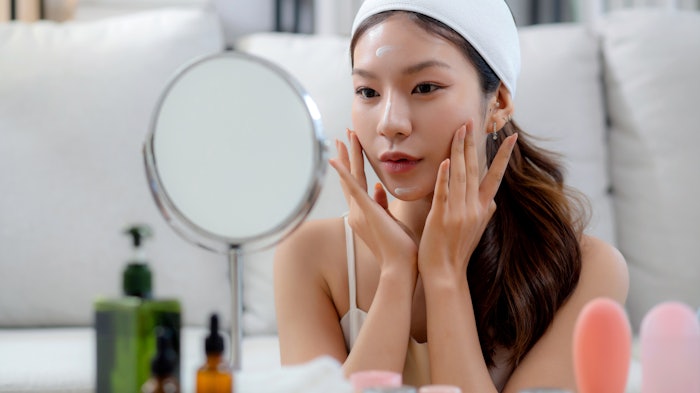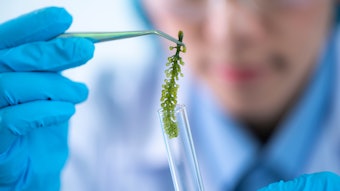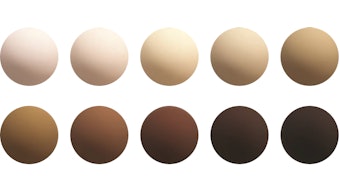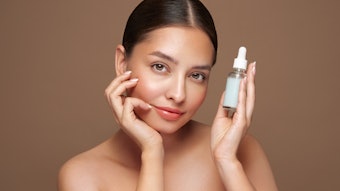
The framework of the "hallmarks of aging" has transformed how both researchers and the beauty industry understand the mechanisms that drive aging processes, particularly in skin. Rather than focusing solely on surface-level symptoms, this approach dives into the interconnected biological mechanisms that shape the aging process at a molecular and cellular level. To uncover the implications of this revolutionary model for cosmetic science, product development and consumer education, we reached out to Rebecca Gadberry (RG), a leading authority in skin science, UCLA cosmetic science educator and director of product development for YG Labs, for her insights.
Log in to view the full article
The framework of the "hallmarks of aging" has transformed how both researchers and the beauty industry understand the mechanisms that drive aging processes, particularly in skin. Rather than focusing solely on surface-level symptoms, this approach dives into the interconnected biological mechanisms that shape the aging process at a molecular and cellular level. To uncover the implications of this revolutionary model for cosmetic science, product development and consumer education, we reached out to Rebecca Gadberry (RG), a leading authority in skin science, UCLA cosmetic science educator and director of product development for YG Labs, for her insights.
Defining the ‘Hallmarks of Aging’
C&T: The beauty industry is buzzing over the hallmarks of aging. In general, how would you define a "hallmark?"
RG: A hallmark of aging is essentially a biological signature or characteristic that appears consistently across species as they age. Think of these hallmarks as the fundamental processes that drive aging at the cellular and molecular level. What makes them so fascinating is that they're not just random symptoms — they're interconnected mechanisms that collectively contribute to the aging process.
When scientists talk about hallmarks, they're referring to specific biological changes that meet three important criteria: first, they manifest during normal aging; second, if you experimentally accelerate them, aging speeds up; and third — this is the exciting part for our industry — if you can ameliorate or reverse them, you can potentially slow down the aging process.
What's particularly interesting about these hallmarks is that they're not isolated events. They form an intricate network where one hallmark can trigger or amplify another, creating a cascade effect that ultimately manifests as what we recognize as aging, both internally and on the skin's surface.
The Appeal of Hallmarks to Consumers
C&T: What do hallmarks of aging represent? Why are consumers so interested in them? What does this say about consumers' skin care concerns?
RG: For consumers, the hallmarks of aging represent a more sophisticated understanding of why their skin changes over time. We're seeing a significant shift in consumer mindset. They're no longer satisfied with products that simply promise to "reduce wrinkles" or "firm skin." Today's consumers want to understand the why behind these changes.
This interest reflects a broader trend toward scientific literacy in skin care. Consumers are increasingly educated about ingredients and mechanisms. They're reading scientific papers, following researchers on social media, and demanding evidence-based solutions. The hallmarks framework gives them a conceptual model to understand aging beyond just surface-level changes.
I believe this also signals a shift from purely aesthetic concerns to a more holistic view of skin health. When consumers understand that the same processes causing their wrinkles are also affecting their overall health, skin care becomes part of a larger wellness conversation. They're connecting the dots between lifestyle factors, internal health and external appearance. For instance, when I say there's evidence to suggest the body ages from outside in, due to aging cells that leave the skin and enter other areas of the body, people get very, very interested in how they're caring for their skin.
What's particularly compelling about the hallmarks approach is that it offers hope. If aging stems from specific biological processes rather than just the inevitable passage of time, then perhaps we can intervene in meaningful ways. This resonates with consumers who want to take a proactive, preventative approach rather than simply reacting to signs of aging after they appear. This new focus is being referred to as longevity, pro-aging or biohacking skin care.
The Recognized Hallmarks of Aging
C&T: What hallmarks are most recognized by the scientific community? What are the biological mechanisms (in brief) and the resulting "aging" effects?
RG: The scientific community initially identified nine hallmarks of aging in a landmark 2013 paper published in Cell, which has since been expanded to include additional hallmarks. Let me walk you through the original nine and their effects on skin aging.
- Genomic instability is perhaps the most fundamental. Throughout life, our DNA accumulates damage from both internal and external sources — UV radiation being a major culprit for skin. This damage leads to mutations that can disrupt cellular function, potentially causing pigmentation issues, reduced barrier function and compromised repair mechanisms.
- Telomere attrition is another critical hallmark. Telomeres are the protective caps at the ends of our chromosomes, and they shorten with each cell division. When telomeres become critically short, cells enter senescence or undergo apoptosis. In skin, this manifests as thinner epidermis, reduced healing capacity, and diminished structural integrity.
- Epigenetic alterations, which I believe I was the first to introduce in terms of relevance to skin care, represent changes in gene expression without changes to the DNA sequence itself. Environmental factors like UV exposure, pollution, tobacco smoke, emotional stress, diet and ingredients can trigger these alterations, potentially activating or deactivating genes associated with inflammation or anti-inflammation, hydration, barrier lipids, hyaluronic acid and degradation or synthesis of structural proteins like collagens and elastins.
- Loss of proteostasis refers to the decline in the cell's ability to maintain proper protein folding, degradation and quality control. This leads to the accumulation of misfolded proteins, which can trigger inflammation and compromise cellular function. In skin, this can manifest as reduced barrier function, impaired response to environmental stressors, advances in aging and other skin conditions.
- Deregulated nutrient sensing involves pathways that detect and respond to nutrient availability, like insulin/IGF-1 signaling. When these pathways become dysregulated with age, they can accelerate aging processes, including the glycation of skin proteins, which contributes to stiffening and yellowing of the skin at a dermal and epidermal level.
- Mitochondrial dysfunction affects cellular energy production and increases oxidative stress. In skin, this can lead to reduced energy for repair processes, increased sensitivity to environmental stressors, and accelerated breakdown of structural proteins.
- Cellular senescence occurs when cells stop dividing but remain metabolically active, secreting inflammatory factors called SASPs (Senescence-Associated Secretory Phenotype). These create an aging microenvironment that can spread senescence to otherwise healthy adjacent cells and can launch a biochemical cascade that damages surrounding tissues.For instance, senescent circulating immune cells in the epidermis and dermis are the cells responsible for spreading aging throughout the body, as discussed earlier. Senescent cells accumulate with age and contribute to chronic inflammation, the degradation of the extracellular matrix, and impaired tissue regeneration.
- Stem cell exhaustion involves a decline in the regenerative potential of stem cells. In skin, this leads to slower wound healing, reduced epidermal renewal and compromised barrier function.
- Altered intercellular communication refers to changes in how cells signal to each other. This includes increased inflammatory signaling, or inflammaging, and disrupted hormone signaling. These changes can lead to chronic inflammation, impaired immune function and reduced response to environmental stressors.
More recently, three additional hallmarks have gained recognition:
10. Chronic inflammation, which amplifies tissue damage,
11. Disabled macroautophagy, affecting cellular "self-cleaning" mechanisms, and
12. Dysbiosis, i.e., disruptions in the microbiome that can affect skin health and immunity.
Emerging Hallmarks of Aging
C&T: What other potential "hallmarks" are out there? What are we missing?
RG: While the current hallmarks provide a comprehensive framework, I believe we're still uncovering additional mechanisms that may eventually be recognized as hallmarks in their own right.
13. Mechanical aging: One area that deserves more attention is mechanical aging — changes in the physical properties of tissues over time. The skin's biomechanical properties change dramatically with age, becoming less elastic and more prone to deformation. These changes aren't fully explained by the current hallmarks and may involve unique mechanisms related to cross-linking of extracellular matrix proteins and changes in tissue architecture.
14. Circadian rhythm disruption: Another emerging area is circadian rhythm disruption. We know that cellular clocks regulate numerous processes in the skin, from barrier function and hydration to DNA repair and mitochondrial activity. With age, these rhythms become dysregulated, potentially accelerating other aspects of aging. I wouldn't be surprised if circadian dysregulation is eventually recognized as a distinct hallmark.
15. Skin-brain axis: The skin-brain axis is another fascinating frontier. We're beginning to understand how neurological signaling affects skin function and how this communication changes with age. Neuropeptides and neurotransmitters play crucial roles in skin homeostasis, and disruptions in these pathways may constitute another dimension of aging.
16. ECM degradation and the role of keratinocytes: I'm also watching research on extracellular matrix (ECM) degradation as well as the role of keratinocytes in skin aging. While ECM degradation is partially covered under existing hallmarks, the specific mechanisms of ECM remodeling in aging skin — including the balance between matrix metalloproteinases and their inhibitors — may warrant special attention as a distinct process.
Keratinocytes also play a fascinating role here. As the predominant cell type in the epidermis, their function changes dramatically with age; from altered proliferation rates and differentiation patterns to modified barrier function and inflammatory responses. Aged keratinocytes show decreased ability to respond to environmental stressors, reduced production of lipids essential for barrier function, and altered communication with dermal fibroblasts. This disrupted epidermal-dermal communication may be a key driver in the dysregulation of ECM production and maintenance.
Future Directions in Aging Hallmarks Research
C&T: Where else might we look to find hallmarks of aging? What areas should we explore in the future?
RG: I believe the future of aging research lies in understanding the interconnections between systems rather than focusing solely on cellular and molecular mechanisms. We need to look at how aging affects the integration of different physiological systems.
The exposome — the totality of environmental exposures throughout life — represents a promising area for exploration. How do factors like pollution, diet, stress and climate change interact with our genetics to influence aging trajectories? This could lead to more personalized approaches to addressing skin aging based on individual exposure histories.
Another frontier is the role of the skin as an endocrine organ. The skin both responds to and produces hormones, and this function changes with age. Understanding how skin participates in whole-body endocrine signaling could reveal new mechanisms of aging and potential intervention points.
I'm also interested in research exploring tissue-specific aging patterns. Different tissues age at different rates and through somewhat different mechanisms. Understanding why certain skin regions show accelerated aging compared to others could provide insights into fundamental aging processes and potential protective factors.
This regional variation highlights a critical challenge in skin aging research: the epigenetic complexity of skin. Each region of skin has its own unique epigenetic signature, and even individual cells within the same region can display different epigenetic patterns. This cellular and regional epigenetic heterogeneity makes it exceptionally difficult to develop skin care products that effectively target epigenetic factors across all affected cells and skin areas. Rather than focusing solely on epigenetics, a more comprehensive approach considering multiple hallmarks of aging may be necessary to address these regional differences effectively.
We should also be looking more closely at the intersection of metabolism and aging. The skin has its own metabolic patterns that change with age, affecting everything from barrier function to pigmentation. Metabolomics approaches could reveal new biomarkers and mechanisms of skin aging.
Finally, I think we need to explore aging as a four-dimensional process that unfolds over time. Rather than viewing aging as a state, we should study the trajectories and transitions between different aging phases. This temporal dimension could reveal critical tipping points where interventions might be most effective.
A New Paradigm for Anti-aging Strategies
C&T: How is the focus on hallmarks of aging any different from traditional anti-aging strategies?
RG: The hallmarks approach represents a paradigm shift from traditional anti-aging strategies in several important ways.
Mechanism focused: Traditional approaches have been largely symptom-focused — targeting visible signs of aging like wrinkles, sagging and hyperpigmentation. The hallmarks framework, by contrast, is mechanism focused. It addresses the underlying biological processes that drive these visible changes, potentially offering more comprehensive and lasting results.
Dynamic network of mechanisms: Traditional strategies also tended to work in isolation, with ingredients targeting specific concerns independently. I've always been uncomfortable with approaches that isolate singular events or processes in aging skin. It reminds me of those old adages: "when all you have is a hammer, everything looks like a nail," and "what you pay attention to determines what you miss."
The reality of skin aging is far more symphonic — it's an intricate interplay of multiple biological systems operating in concert. When we fixate on a single pathway or mechanism, we risk missing the broader context and connections that truly drive the aging process.
This is why I find the hallmarks framework so compelling — it acknowledges this complexity while still providing a structured way to understand it. Each hallmark doesn't exist in isolation; it's part of a dynamic network where addressing one aspect inevitably influences others. In my decades of studying skin science, I've observed that the most effective approaches recognize these interconnections rather than pursuing isolated targets.
The future of skin science isn't about finding the one perfect ingredient or pathway — it's about understanding the delicate orchestration of biological processes and supporting the skin's intrinsic ability to maintain balance across all these dimensions.
Preventative potential: Another key difference is the preventative potential. Traditional anti-aging typically focused on reversing existing damage. The hallmarks framework enables us to identify early biomarkers of aging and intervene before visible signs appear. This shift from reactive to proactive approaches could fundamentally change how we think about skin aging.
The hallmarks approach also bridges the gap between cosmetics and health. By targeting biological mechanisms that affect both appearance and function, we're moving toward products that truly enhance skin health, not just its appearance. This aligns with consumer desires for products that deliver holistic benefits.
Evidence based: Finally, the hallmarks framework is inherently evidence based. It demands rigorous scientific validation of mechanisms and outcomes, raising the bar for claims substantiation in our industry. This scientific rigor builds consumer trust and drives innovation toward truly effective solutions.
The Future of Hallmarks in Beauty
C&T: Do you think the hallmarks of aging are here to stay? How might they evolve from a consumer standpoint? From a product development standpoint?
RG: The hallmarks of aging framework is definitely here to stay, though I expect it will continue to evolve as our understanding deepens. From a scientific perspective, this approach provides a coherent model that organizes our understanding of aging and guides research in productive directions.
From a consumer standpoint, I anticipate increasing sophistication in communication. We're already seeing brands educate consumers about specific hallmarks like cellular senescence or mitochondrial function. As consumer scientific literacy grows, so will the depth of these conversations. I also expect consumers to demand more personalized approaches based on their individual aging patterns and which hallmarks might be most relevant to their skin.
For product developers, the hallmarks framework offers both challenges and opportunities. The challenge lies in developing ingredients and formulations that effectively target specific hallmarks with demonstrable results. This requires sophisticated testing methods beyond traditional clinical evaluations — potentially including biomarker analysis, gene and epigenetic expression profiling, and advanced imaging techniques. The opportunity is to create truly innovative products that address aging at its roots.
Targeting multiple hallmarks: The future of skin care development will inevitably trend toward multifunctional ingredients capable of addressing several hallmarks simultaneously. When we look at why certain ingredients have stood the test of time — retinols, niacinamide, beta glucans, aloe vera, etc. — it becomes clear that their enduring popularity stems from their ability to work with multiple hallmarks at once.
Retinols, for instance, simultaneously influence cellular senescence, epigenetic patterns, ECM remodeling and stem cell function. Niacinamide addresses mitochondrial health, barrier function and inflammatory responses. 1,3/1,6 Beta glucans modulate immune signaling while supporting barrier integrity and cellular response to stress.
Even aloe vera impacts mitochondrial dysfunction, regulates cellular senescence pathways, supports proper protein folding and stability, and counters chronic inflammation through well-documented anti-inflammatory mechanisms, including NF-κB inhibition. Some evidence suggests aloe may also influence epigenetic patterns and support regulated nutrient sensing as well. No wonder aloe has retained its legendary status in skin care for over half a century.
I anticipate we'll discover other popular ingredients having multiple and simultaneous effects besides those described. We'll also see the development of novel multi-targeted ingredients and sophisticated product systems that work in concert to more fully address the interconnected web of hallmarks in the skin and perhaps other body systems.
As stated, this systems-based approach more accurately reflects the complex biology of skin aging than do single-pathway interventions. The industry is recognizing that addressing aging through multiple mechanisms simultaneously yields more profound and sustainable results than does focusing on isolated pathways — exactly what consumers are beginning to demand.
Cross-discipline collaborations: I also anticipate more collaboration between the cosmetics industry and academic researchers to identify and validate new targets within the hallmarks framework.
One exciting development I foresee is the integration of diagnostic tools with personalized product recommendations. Imagine being able to assess which hallmarks are most active in an individual's skin and then prescribe a customized regimen to address those specific mechanisms. This level of personalization could revolutionize how we approach skin aging and recovery.
The hallmarks approach also opens doors for cross-disciplinary innovation. By drawing insights from fields like regenerative medicine, nutritional science and chronobiology, we can develop novel approaches to skin aging that might not have emerged from traditional cosmetic research.
Ultimately, I believe the hallmarks of aging will serve as a scientific foundation that elevates our entire industry. By grounding our work in fundamental biology rather than superficial effects, we can develop products that truly improve skin health and function while also delivering the aesthetic benefits consumers desire. This science-first approach represents the future of beauty — one where efficacy, transparency and holistic skin health take center stage.
Final Comment: Hallmarks Embody a New Philosophy
RG: The hallmarks of aging represents more than just a scientific framework, it embodies a new philosophy for addressing skin aging that prioritizes mechanisms over symptoms and prevention over correction. As our understanding of these hallmarks continues to evolve, so too will our approaches to product development and consumer education. By embracing this paradigm shift, the beauty industry has an opportunity to create truly transformative solutions that enhance both the appearance and health of skin throughout the aging process.










